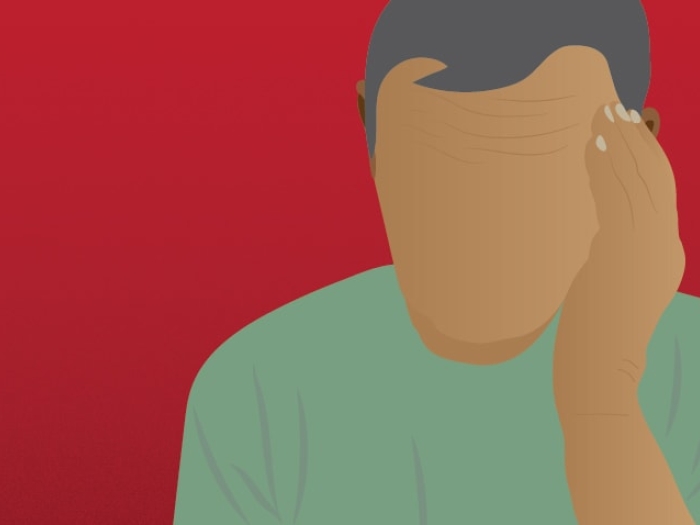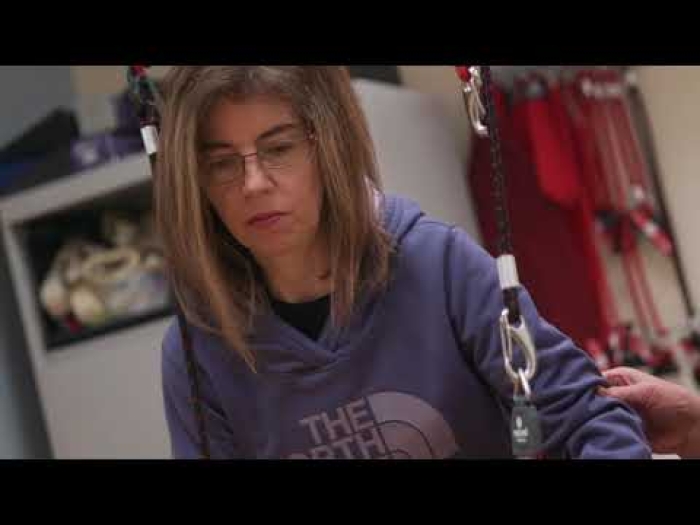After an unexpected stroke, a young athlete is thankful for a new lease on life — and the care he received at Michigan Medicine.
7:00 AM
Author |

During a routine lacrosse game in high school, Brett Flowers was hit in the neck with a lacrosse stick and ball — an incident that at first didn't seem that serious.
MORE FROM MICHIGAN: Sign up for our weekly newsletter
Flowers, then 15, recalls stumbling off the field and falling to the ground. He was conscious and able to talk. But several minutes later, the healthy athlete couldn't move the right side of his body or speak clearly.
He was taken by ambulance to a hospital near his home in Maumee, Ohio, before being transferred to another hospital for more extensive tests that revealed the blow to his neck had triggered a stroke.
The cause: carotid artery dissection.
The carotid artery is a muscular blood vessel that carries oxygenated blood to the head and brain. A dissection occurs when trauma causes a tear in the wall of the vessel. When this happens, the wall's layers separate, leading to a blockage or dilation of the vessel. The result can be total artery blockage and stroke.
Dissection may happen without an obvious cause or may be a result of trauma to the neck, as in Flowers' case. Carotid artery dissection accounts for a large percentage of strokes in young patients due to sports-related injuries.
Flowers was put on blood thinners, underwent more tests, including CT and MRI scans, and he was closely monitored for a week.
Carotid artery dissection treatment
The patient was sent home with instructions to "take it very easy for a while," Flowers recalls.
One day later, unable to move his right arm or face, his family called paramedics. Another stroke had occurred.
SEE ALSO: Think You're Having a Stroke? Every Minute Counts
Without the resources to treat him, Flowers' local hospital recommended he be airlifted to Michigan Medicine's Comprehensive Stroke Center, where he was seen by neurosurgeon Aditya S. Pandey, M.D.
"When I got to U-M, they realized the carotid artery had been hit so hard that a balloon had formed and blood was clotting, causing the stroke," Flowers says.
Pandey and his team attempted to perform an endovascular carotid stenting procedure — in which a small puncture is made in the femoral artery in the groin. A guiding catheter is advanced into the internal carotid artery, where a thin wire is advanced into the carotid artery and a stent is positioned in the artery. The permanent stent is released and dilated with an angioplasty balloon. The stent holds the artery open, allowing blood to flow and the dissection to be sealed.
Despite the team's attempt, Flowers proved not to be a candidate for the procedure due to the extent of his dissection.
"In Brett's case, the dissection was so severe that a stent could not be placed, thus the internal carotid artery was closed permanently to prevent clots from traveling to the brain," says Pandey.

Getting back in the game
Flowers was on blood thinners for more than a year, followed by a regimen of half an aspirin each day and regular monitoring. By the time he was a senior in high school, he was off all medications.
Today, the University of Toledo business student is grateful for his recovery. "My injury healed very well and I've had no real restrictions," the 21-year-old says. "I was worried about how my life would change, but it really hasn't. I've experienced only mild cognitive differences, but I've overcome things pretty well."
Pandey, who follows up with Flowers once a year, attributes his patient's recovery to a great attitude, strong support from his parents, and U-M's Comprehensive Stroke Center, which allows for the successful treatment of complex stroke patients.
Flowers played it safe and stayed on the sidelines during the remainder of his high school lacrosse career, serving as an assistant coach. While neck guards weren't mandatory at the time of his accident, Flowers notes that players can now opt for a hockey neck guard for added protection.
Although a neck guard may have changed his outcome that day in 2012, Flowers isn't looking back: "I am so thankful to have the life I have today and not have any drawbacks from my stroke," he says.
To learn more about stroke types, symptoms and treatments, click here.

Explore a variety of health care news & stories by visiting the Health Lab home page for more articles.

Department of Communication at Michigan Medicine
Want top health & research news weekly? Sign up for Health Lab’s newsletters today!





